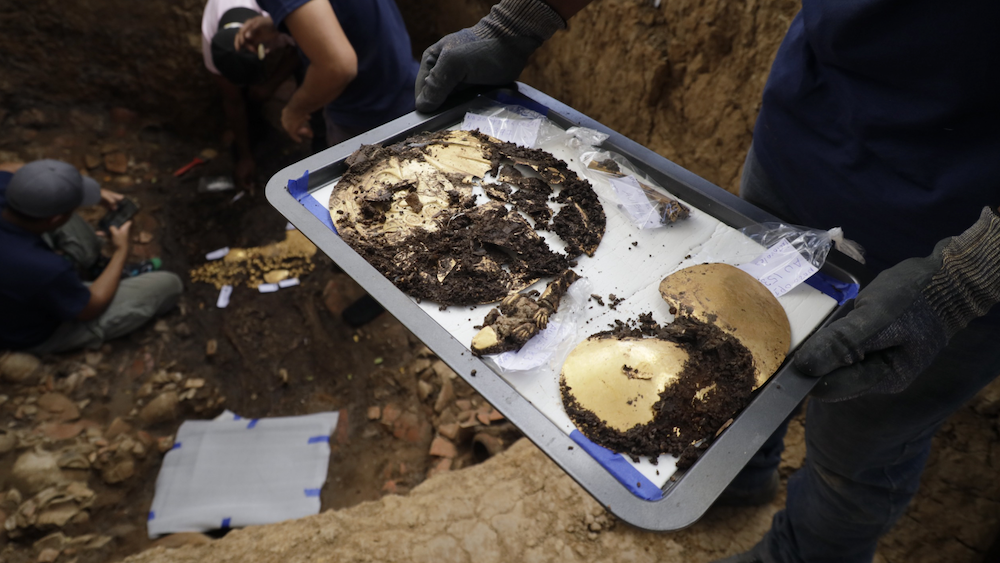1,200-year-old lord's tomb laden with gold unearthed in Panama
The tomb was likely built for a pre-Hispanic, high-status adult male.

Archaeologists in Panama have discovered a 1,200-year-old tomb belonging to pre-Hispanic royalty that also contains a sizable gold collection.
The tomb is located in El Caño, an archaeological park in the Coclé province of central Panama. It is the final resting place of an "important Coclé lord," according to a translated statement from Panama's Ministry of Culture.
The lord likely lived during the late 700s and would have been in his 30s when he died, according to an El Caño Foundation Facebook post.
The tomb contained an impressive amount of grave goods belonging to the unnamed royal, such as ceramic artifacts and gold pieces from a funerary trousseau — a collection of an individual's personal possessions.
The cache includes five pectorals, or ornamental breast plates, two belts made of round gold beads, four bracelets, two earrings depicting a man and a woman, an earring shaped like a double crocodile, a beaded necklace, five earrings crafted from sperm whale teeth plated in gold, a set of circular gold plates, two bells, a set of bone flutes, as well as bracelets and skirts made with dog teeth.
The "high-status adult male" was buried face down, which was a common burial practice during this time period, according to the statement. The excavation is ongoing, so archaeologists still aren't sure if more individuals are buried alongside the man. However, tombs from this period often include the burial of a woman and others beneath the man "to serve as companions," so it's possible that he's not the only person buried in the tomb.
Related: 13 of the oldest archaeologist sites in the Americas
Get the world’s most fascinating discoveries delivered straight to your inbox.
Other people buried in multi-person graves from this period were likely interred to accompany a key individual into the "beyond," Julia Mayo, director of the El Caño Foundation and director of the archaeological project, noted in the statement.
For instance, Mayo and colleagues at El Caño previously found the remains of a warrior chief covered with gold grave goods and buried on top of 25 arranged bodies.
The El Caño site was initially discovered in 1925 and investigated in the 1970s, but it wasn't until 2008 that Mayo and her colleagues launched a more formal excavation of the area, which revealed a large necropolis. Their work suggests that El Caño was used by a pre-Hispanic, chiefdom-based society starting in A.D. 700 until it was abandoned in 1000. El Caño houses several "well-known monoliths" in addition to a ceremonial area containing wooden buildings, according to the statement.
Jennifer Nalewicki is former Live Science staff writer and Salt Lake City-based journalist whose work has been featured in The New York Times, Smithsonian Magazine, Scientific American, Popular Mechanics and more. She covers several science topics from planet Earth to paleontology and archaeology to health and culture. Prior to freelancing, Jennifer held an Editor role at Time Inc. Jennifer has a bachelor's degree in Journalism from The University of Texas at Austin.




